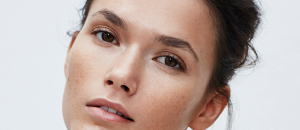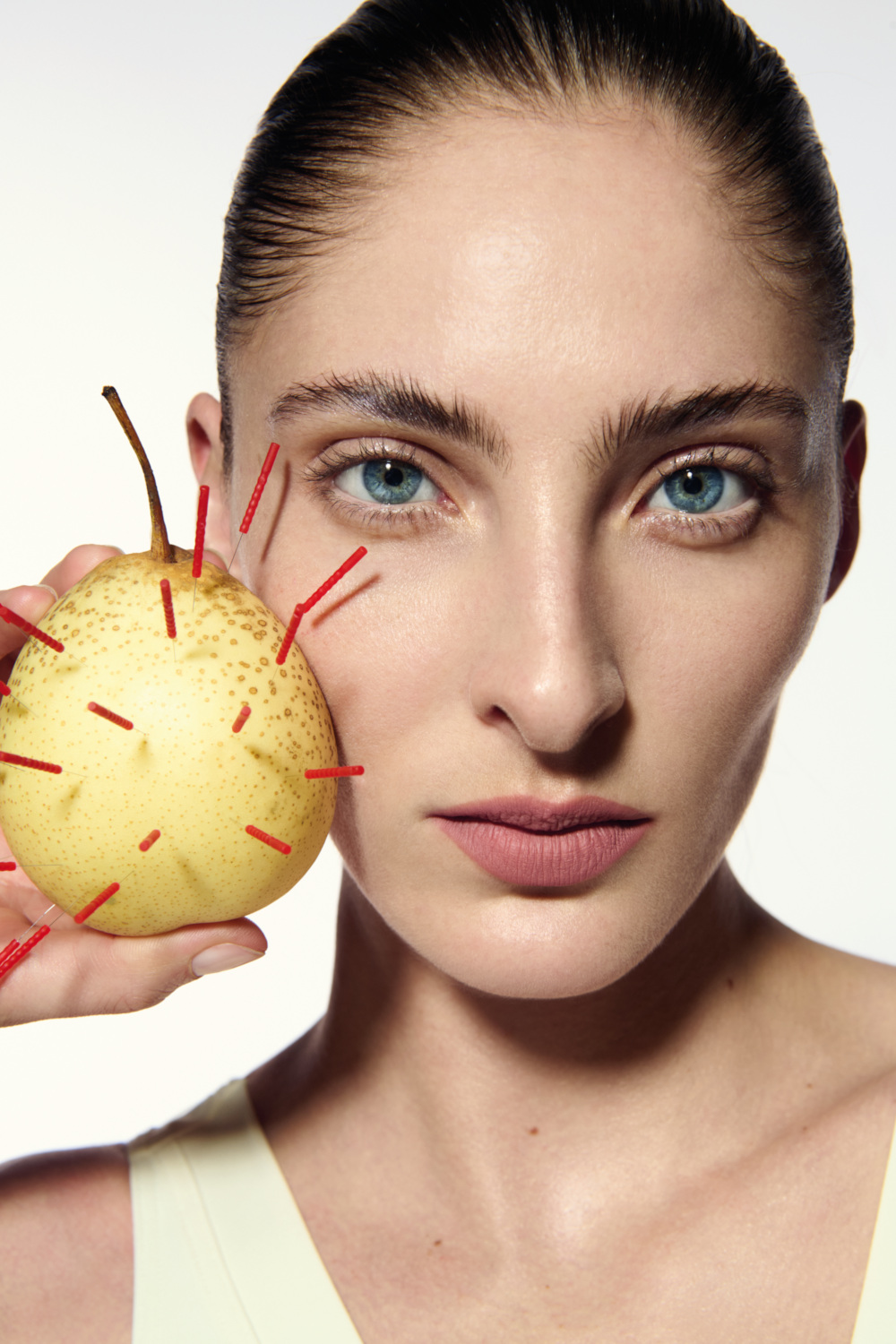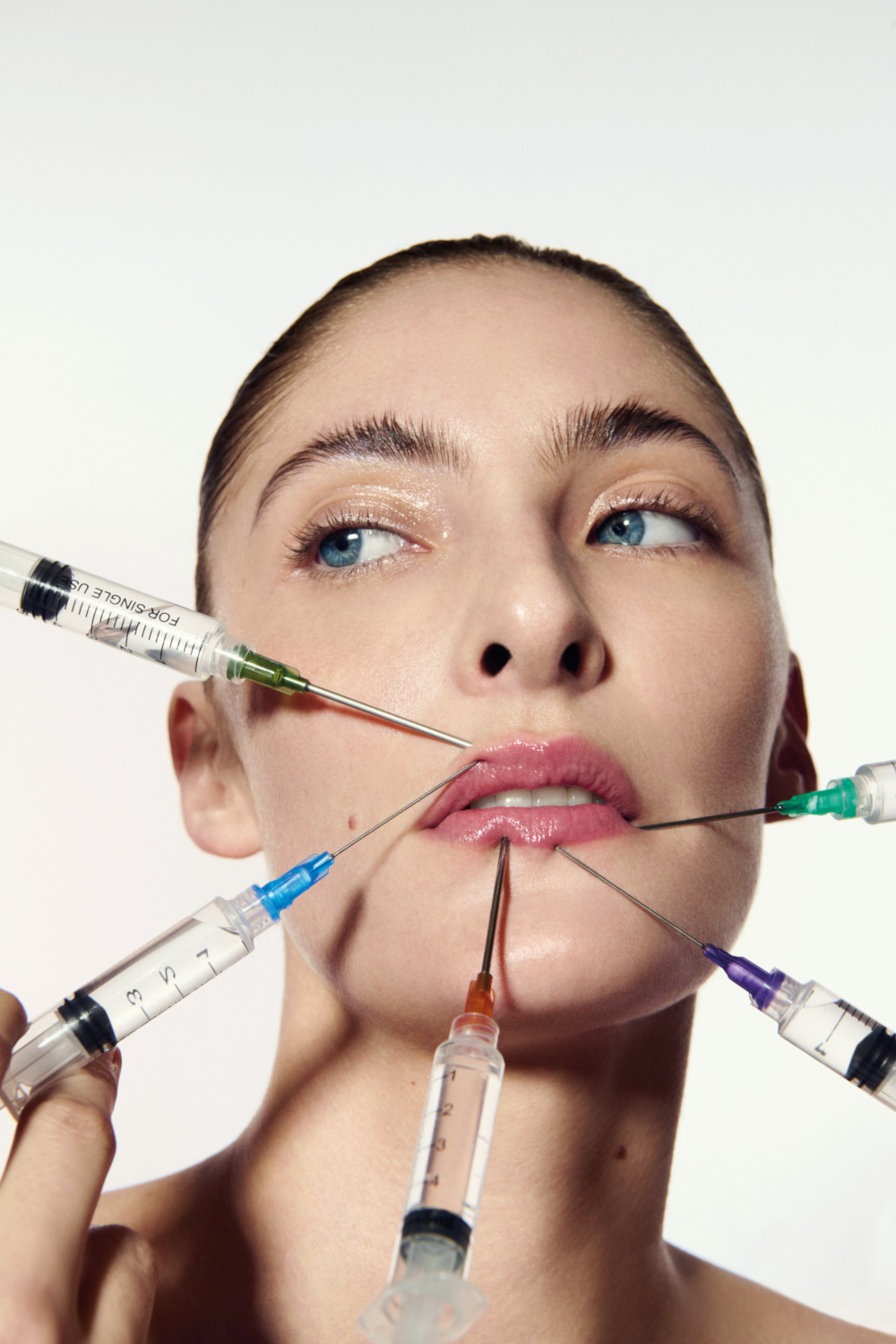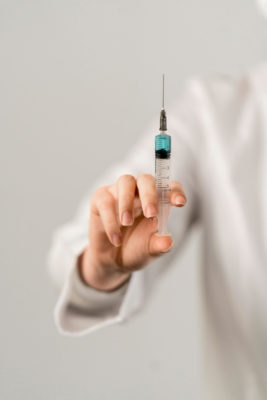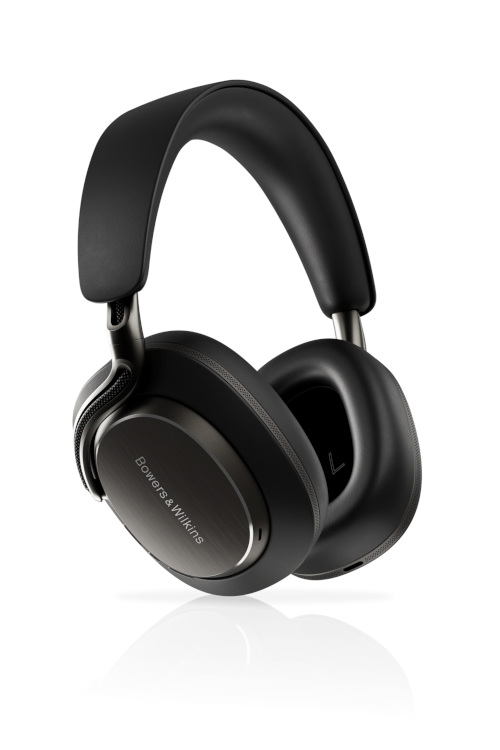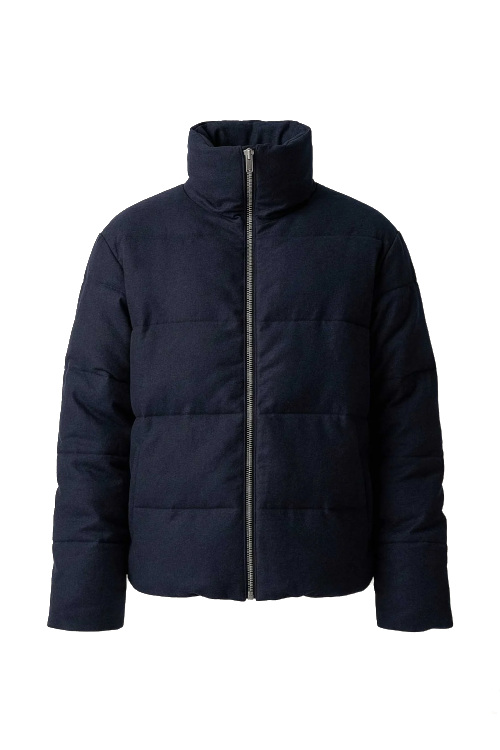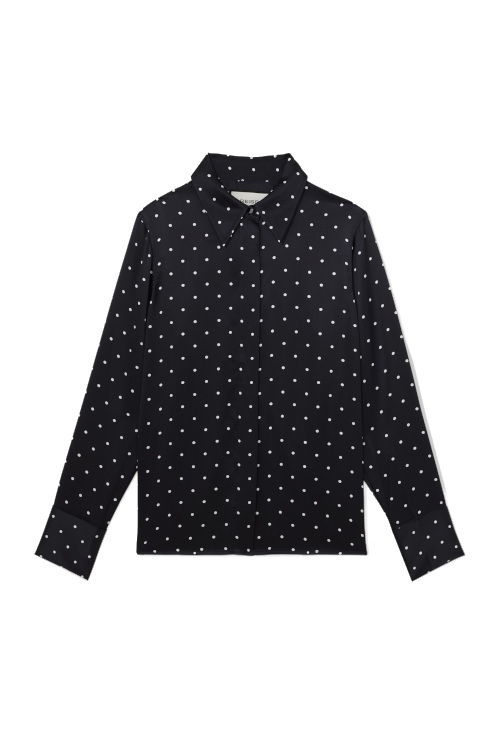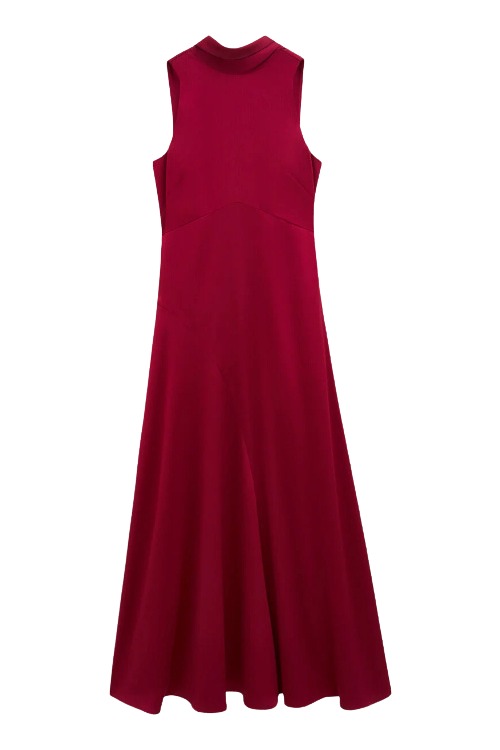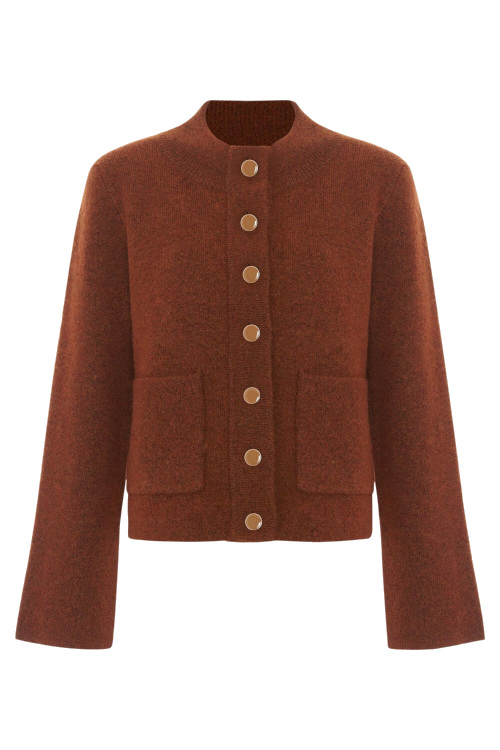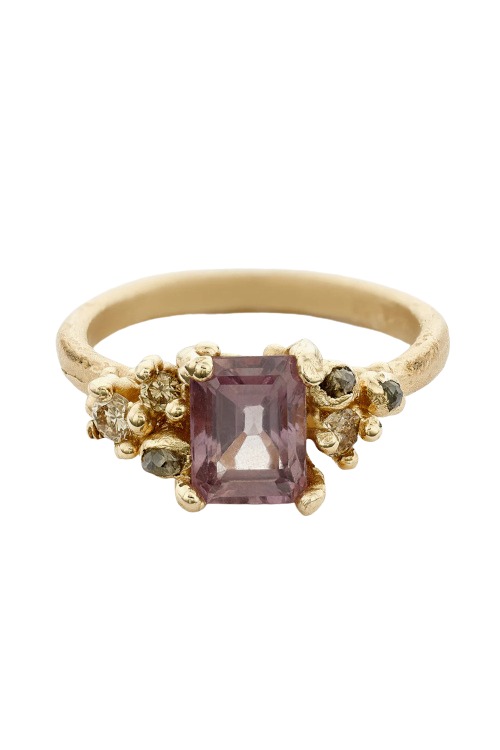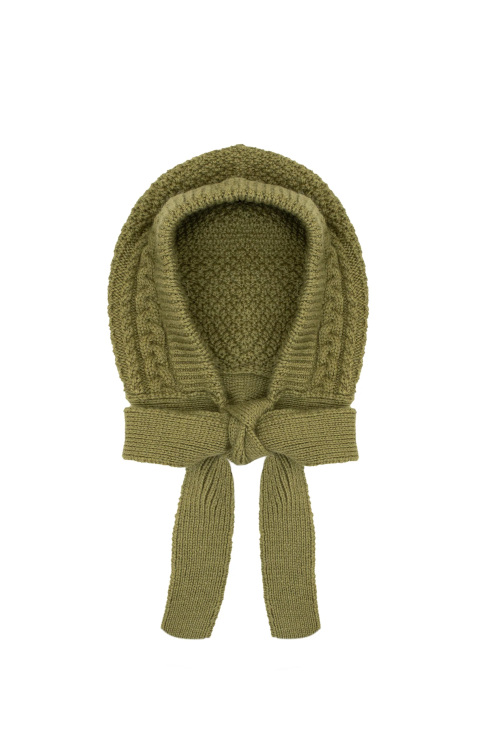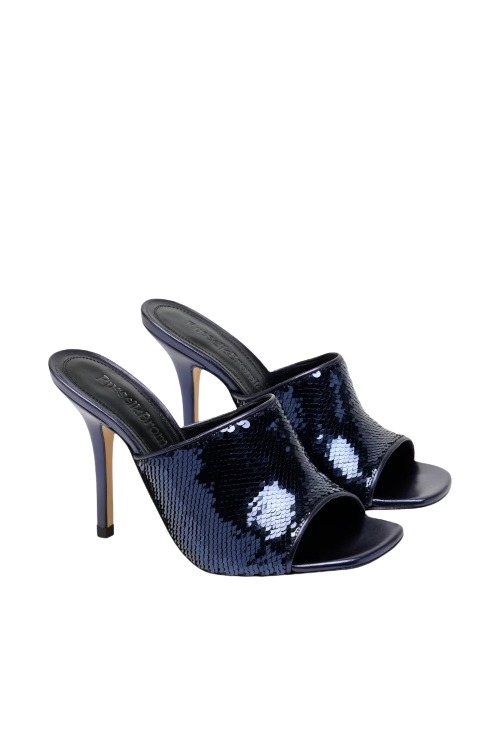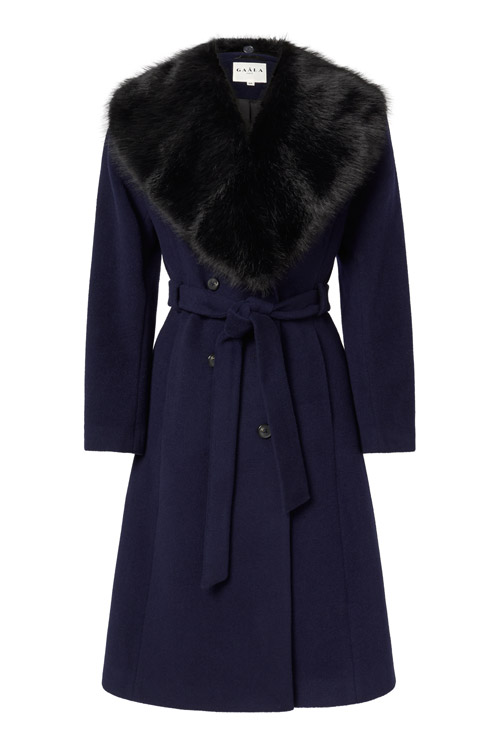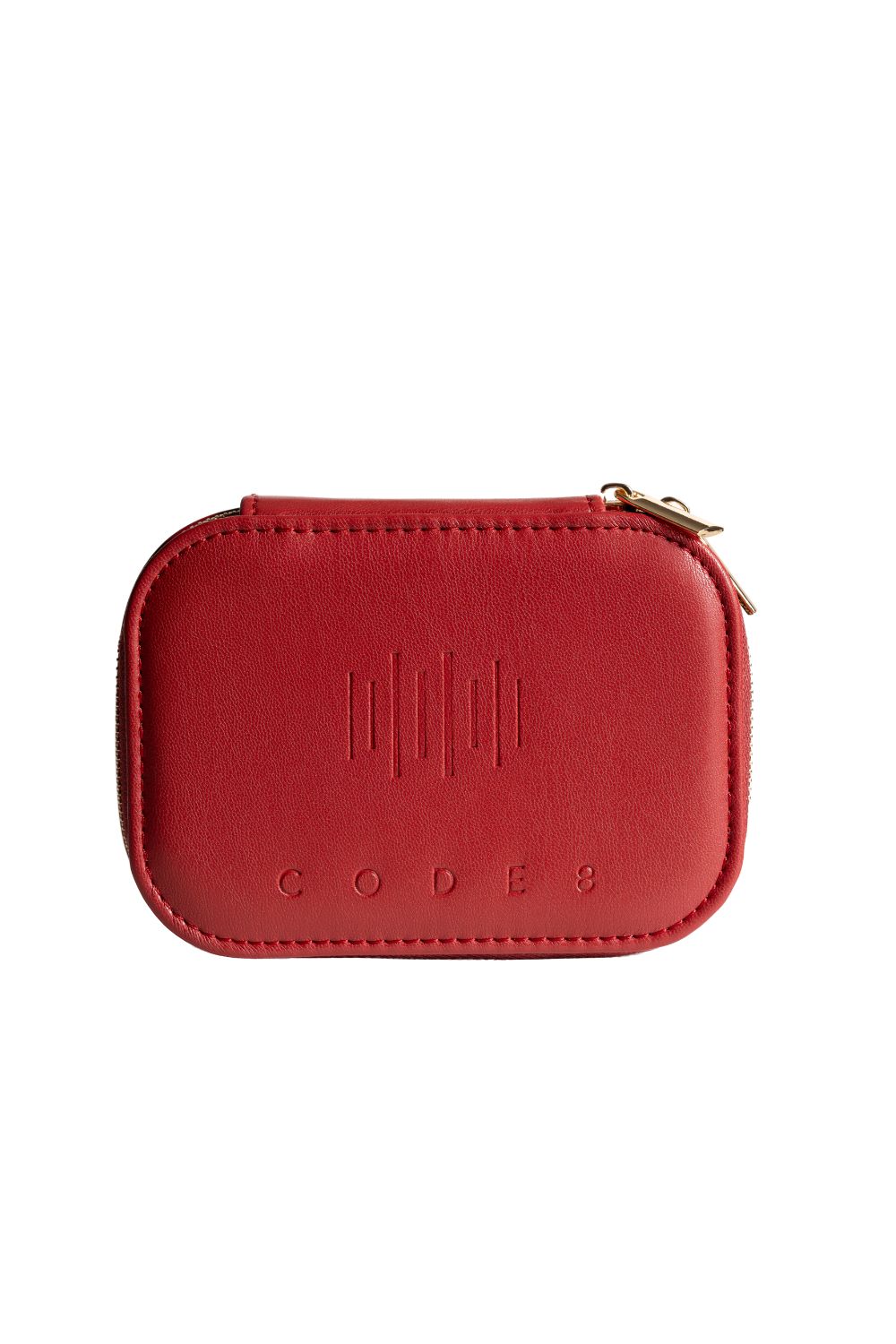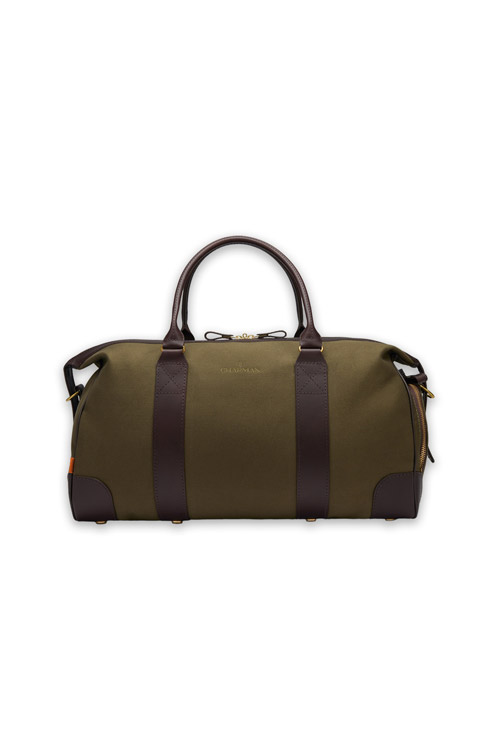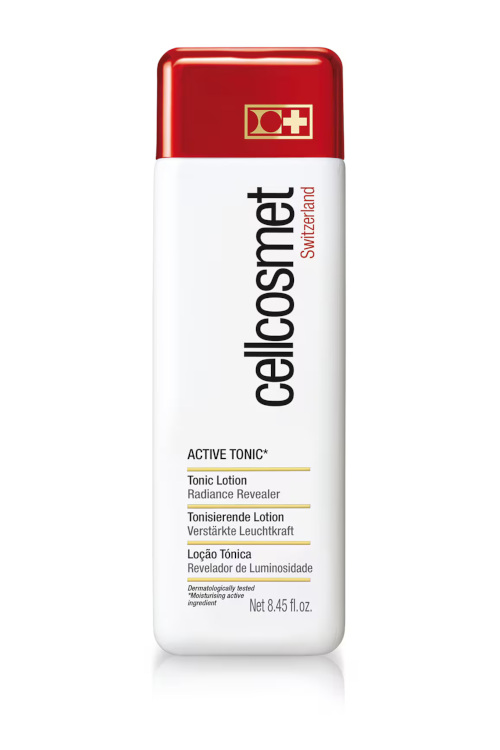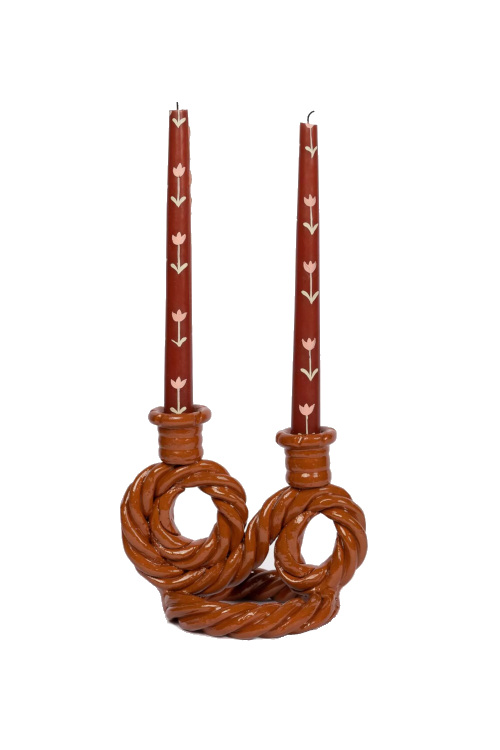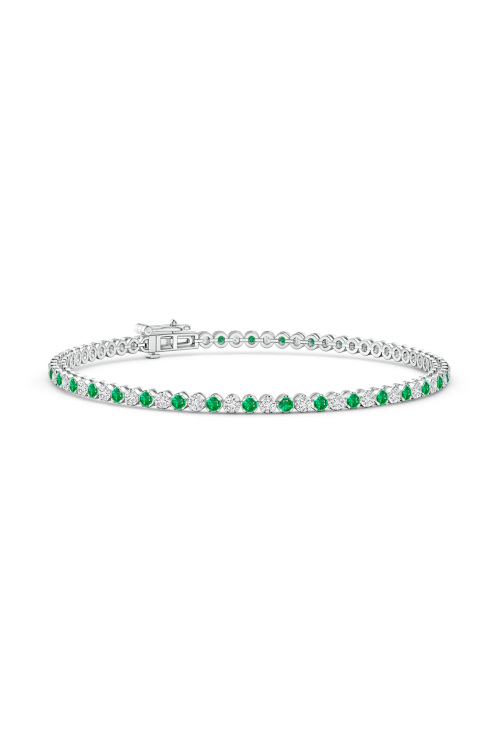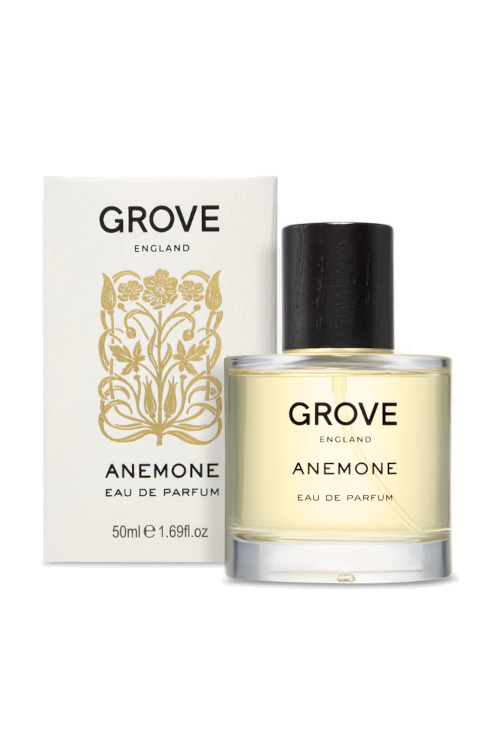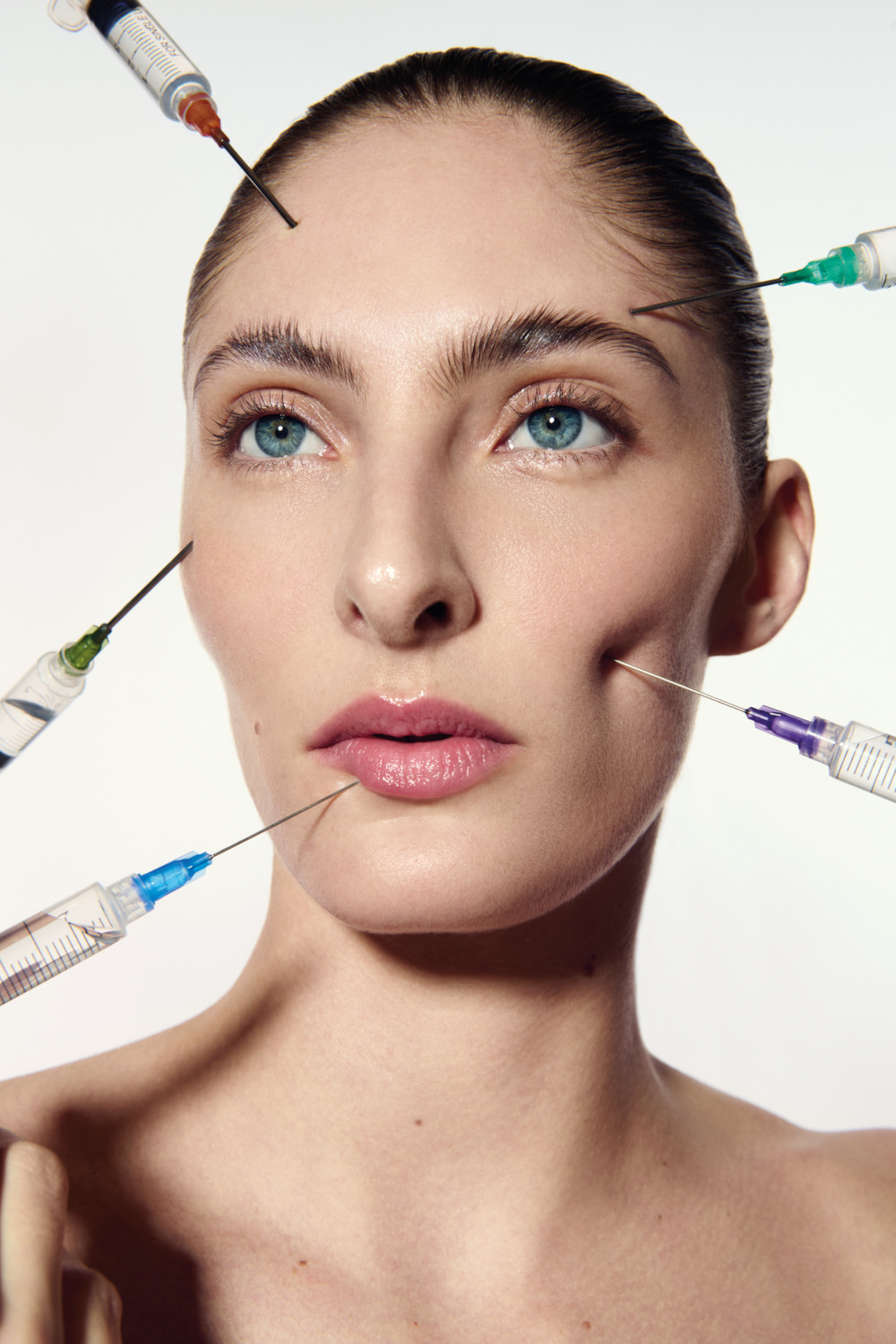
Blink And You’ll Miss It: The New Wave Of Injectables
By
8 months ago
Feeling filler fatigue? Then it's time to take the stealth approach
The overdone look is over. But that doesn’t mean injectables are out – they’re just smarter and less obvious than ever. Olivia Falcon reports on the undetectable injectable taking over clinics.
What The Eye Can’t See: The Rise Of Undetectable Injectables
In the fast-paced world of aesthetics, the celebrity face is getting a makeover. Out are the goldfish lips, golf ball cheeks and juddering jaws. Obvious ‘look at me’ work is now a cause to look away. The new beauty goal is to keep your audience guessing. After all, if you can tell someone’s had work done, then it isn’t good work.
In Hollywood, stars such as Lindsay Lohan, Christina Aguilera and Demi Moore are all serving up fresh-faced looks en pointe. They are women of ‘a certain age’ who have sent social media sleuths into a frenzy trying to figure out who (doctor? surgeon? derm?) or what (dissolved filler? facelift? maybe a bit of both?) is responsible for their elegant glow-ups.
Well-heeled women (and men) who continue – often unknowingly – to walk around with last decade’s archetypal inflated face, clearly haven’t got the memo – while money talks, good injectables whisper.
Over the last few years fillers have fallen out of favour with consumers. The British Association of Aesthetic Plastic Surgeons Audit of 2022-23 reported a 27 percent drop in patients having filler treatments, while Dr Munir Somji, who has clinics across London and Essex, says most dermal filler companies are reporting a 20 percent fall in sales for hyaluronic acid injectables.
The term, ‘filler fatigue’, which refers to the overuse or improper application of dermal fillers has entered the lexicon and patients are voting with their feet. ‘We see fewer requests for the overly inflated lips or the frozen foreheads that defined past decades,’ observes Dr Thivos Sokratous, an aesthetics doctor at Ouronyx Clinic in London. ‘Instead, clients want to emote without revealing obvious signs of intervention. The industry has evolved from dramatic transformations to gentle refinements – it’s a more natural aesthetic that ages gracefully.’
What Are Those In The Know Doing Differently?
Rather than just chasing lines and wrinkles, top doctors are treating the skin and facial tissues more holistically by layering different modalities. Doctors now know hyaluronic acid fillers last longer than first thought, and an accumulation of filler in the face draws in water, leading to a puffy, overfilled look. Bio-stimulating injections that signal the patient’s cells to create their own collagen and skin boosters that refine skin texture are more in demand. Dr Ashwin Soni, who has clinics in London and Ascot, is leading the charge with dynamic injectable protocols.
‘In the past year I’ve noticed around a 30 percent decline in people asking for fillers, and I’m dissolving a lot of old filler – but I’m not replacing like with like. One of my most popular treatments for rejuvenating a deflated face is Sculptra by Galderma, a bio-stimulatory product made of Poly-l-Lactic (the same material used in dissolvable stitches), which stimulates collagen and elastin to gently remodel the face. The effects of Sculptra can last a couple of years and it works to delay the need to do a filler top up. For radiance and skin texture, I then might use small doses of polynucleotides [Soni, like many other top doctors including Dr Uliana Gout and Dr Ariel Haus, likes the Plinest brand, which he says is the most researched with an excellent safety record] to gently hydrate and rejuvenate the skin from the inside out. To address skin textural issues such as larger pores, I may Microtox the skin. This is a Korean technique that uses superficial doses of a toxin injected into the top layers of the skin to refine the pores rather than freeze the muscles.’ Soni uses tiny doses of Azzalure (toxin) to improve skin texture.
Hyaluronic acid fillers are still used of course, but less abundantly and more thoughtfully. Dr Sophie Shotter, who has clinics in London and Kent, observes, ‘Undetectable work is about the skill of the injector and the consultation. Saying “no” can be hard when you have a powerful client in front of you, but great results are about the partnership between patient and practitioner. When injecting, the key is a thorough assessment that has a strategic plan that’s staggered, so not too much is done at once. I call this a “layering strategy”.’
Dr Shotter commonly injects the face laterally to achieve lift rather than projection. ‘My clinical experience has shown injecting the lateral part of the face – i.e. in the hairline, the area in front of ears, the temples and the jawline – helps to lift everything up without adding heaviness or puffiness to the face,’ she explains.
Her lateral approach is akin to ‘The Swift Lift’, pioneered by Canadian surgeon, Dr Arthur Swift, a muchtemplated injectable technique that uses highly concentrated hyaluronic acid fillers that have a stiff texture – such as Juvaderm VoLux – in the lower face to tighten jowls. While pulling the skin under the cheekbone backwards towards the front of the ear, tiny droplets of filler are injected along the midface. This works like little doorstops to reinforce the ligaments that hold skin onto bone, indirectly giving a lift to the jawline below.
In London, Dr Somji can elevate a downturned mouth with the ‘Tower Technique’, where small drops of filler are placed from the chin to the corners of the mouth to modulate muscles and turn up the corners of the mouth. Instead of overstuffing lips with hyaluronic acid filler, some doctors inject micro droplets of filler around the Cupid’s bow and philtrum, (the little column between lips and nose that flattens as we age), for an elegant enhancement that’s much less detectable.
What About Technical Developments?
Not only are techniques being refined, so too are the products in the syringe. The resurgence in popularity of Sculptra (which has been around for 25 years) has been driven by recently revised dilution strengths. ‘In the last three years Sculptra has changed their dilution protocols to avoid over-stimulating collagen nodules which have led to lumps and bumps,’ says Dr Soni. ‘We have gone from a ten percent complication rate to now only 0.04 percent globally.’ This hyper dilution has paved the way for treating ‘off label’ areas such as the thin skin on the neck, as Sculptra works remarkably well to smooth and thicken crepey skin with natural looking results.
Doctors are also finessing neurotoxin techniques, with dermatologists such as Dr Alexis Granite often offering patients seeking lip treatments a ‘Lip Flip’ (strategic injections of toxin around the lips to expose the pink of the lip) rather than filler.
Perhaps, though, the most intriguing developments are the fat stimulating injectables. As we age, fat cells atrophy and so to recapture the plumpness of a youthful face, Renuva, (currently only available in Dubai and the US), is designed to be injected into areas where fat has been lost. Creating a honeycomblike matrix in the tissues, Renuva creates the perfect environment to incubate a patient’s own fat cells. The effects are said to last between five and ten years
Miami-based dermatologist, Dr Shino Bay Aguilera is one of a handful of doctors to offer Renuva ($1,500 per syringe), and believes it is a great alternative to expensive fat grafting, a procedure where a patient’s own fat is harvested from donor sites such as the tops of the knees and injected back into the face.
‘Fat grafting only lasts one to three years and doctors usually have to overtreat, as 20-25 percent of the fat will be metabolised by the body, so this can lead to weeks of swelling,’ says Dr Aguilera, who had fat grafting around his own eyes with lumpy complications. He has since injected his own face with Renuva and is delighted with the authentic looking results. ‘You can’t treat the eye area as it’s unpredictable how much fat you will make, but it works brilliantly on temples, cheeks and the lower face. I use a super fine cannula to avoid bruising and there is very little inflammation, so patients can go straight back to work after treatment.’
Talking to those at the forefront of aesthetic medicine, it’s clear that bioregenerative techniques (those which are autologous, i.e. from our own bodies) are coming to the fore. ‘Individualised treatment is key,’ says Dr Aguilera. ‘We are developing products that are longer lasting and that work with your own body to stimulate collagen and bring your own fat back. These treatments will allow people to look 15-20 years younger without surgery,’ he predicts.
What’s In Your Needle? 3 Types Of Undetectable Injectables
Hybrid Fillers
HArmonyCa and Radiesse combine hyaluronic acid with calcium hydroxyapatite, a mineral form of calcium that works to stimulate collagen production, to gradually lift and tighten the skin. HArmonyCA is ideal for sharpening jowls, contouring cheekbones and lifting bulldog folds around the mouth, while Radiesse is better for areas that need support like the nasolabial folds and hands. These hybrids can last for up to 24 months.
Biostimulators
A new development in PLLA (poly lactic acid), Julaine stimulates the body’s own type I collagen with spherical molecules that don’t clump together, considerably reducing the risk of lumps. For best results three sessions four to six weeks apart are recommended for results that last up to two years. It’s great for gently volumising cheeks, softening nasal labial folds and sharpening jawlines.
Derived from fish DNA fragments, polynucleotides stimulate collagen and elastin and reduce inflammation. The Plinest range has specific products to treat the eye area and a thicker solution that combines polynucleotides with hyaluronic acid for more structural support to the skin on the neck. It’s best for younger patients or those who want subtle skin rejuvenation and/or in the under-eye area.
Increasing type I collagen by 67 percent in 12 weeks and upping antioxidant levels in the skin, Sculptra has also recently been found to upregulate new and healthy fat cells to maintain a perky skin tone. Used for lower face and cheek rejuvenation, it’s also efficient at smoothing crepey skin when used off-label on the neck.
Cellenis PRP DermaFiller is a new type of platelet-rich plasma (PRP) that utilises a proprietary separation technology to heat and then cool the patient’s own blood platelets, concentrating them into a mesh that is then injected back into the face to gently volumise.
Platelet-rich fibrin (PRF) is a newer generation of PRP preparation that can be used in a variety of ways to treat the skin. It regenerates collagen and reverses the signs of aging. It can also be used on the scalp to stimulate hair regrowth. It’s excellent for correcting eye hollowing and improving skin texture.
Smart New Toxins
BoNT/E, which is set to launch at the end of this year, has a quicker onset (taking effect in just eight hours) and is shorter acting, meaning the effects only last a month or so. Anxious first-time patients or those who need a quick pre-event fix should give it a try.
Relfydess, however, offers rapid results in one day and results last up to six months rather than the usual three to four, therefore less clinic visits are needed. Treating angry-looking glabellar lines that hang between the brow is one of its best applications.


